
Practical testing …
Testing headphones is relatively difficult because they behave differently in different environments in terms of sound or battery life. Therefore, this section should be considered subjective. However, we have tried to recreate typical usage scenarios.
Mobvoi TicPods charging …
Before using the headset, connect the box to a USB Type-A or USB Type-C port using the supplied Micro USB charging cable. The charging process is indicated by the flashing of the two green LEDs on the charging box. The in-ears are now already being charged in the box. These light up red during the charging process.
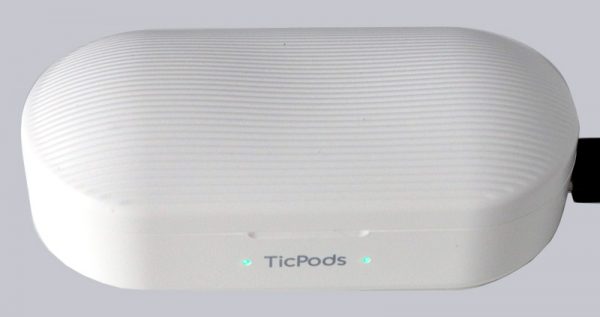
Mobvoi TicPods battery life …
The battery life of course also plays an important role. The manufacturer states that you can actively use the headset for 4 hours and charge it approx. 4 times via the charging cradle, so that you get a total of approx. 18 hours. We wanted to know exactly and listened to music at full volume. The result was a respectable 3 hours, 41 minutes and 17 seconds. A first beep was emitted after 3 hours 21 minutes, so you could prepare to charge the TicPods. Only the charging box didn’t show when it had to be charged.
Mobvoi TicPods Bluetooth connection …
Before playing audio, you must first connect to a Bluetooth enabled device. Most of these devices today are smartphones, tablets, PCs, but also vehicles and some TV devices support Bluetooth playback.
As soon as you open the charging box, both Bluetooth in-ears signal that they are “ready to pair” by flashing blue and a voice output.
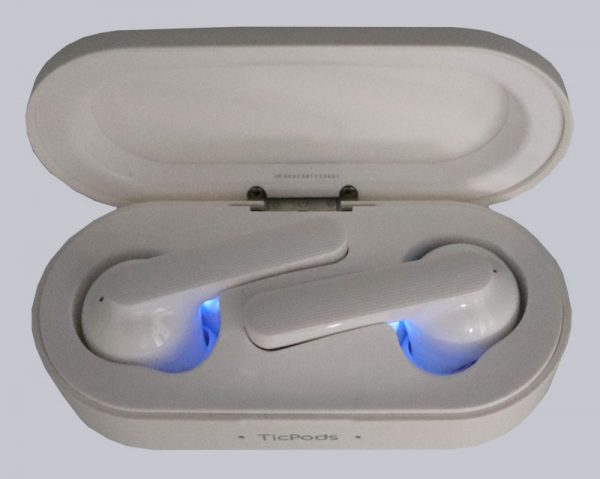
Now we can connect the Mobvoi TicPods Free as long as they are visible as TicPods 4C1D after opening the charging box. In the example we first pair them with a Samsung Galaxy S7 smartphone.
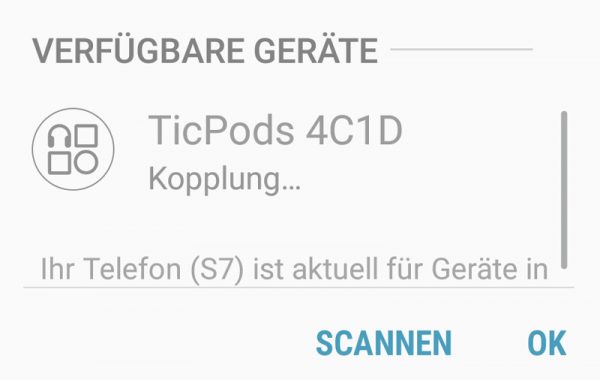
The coupling process worked perfectly.
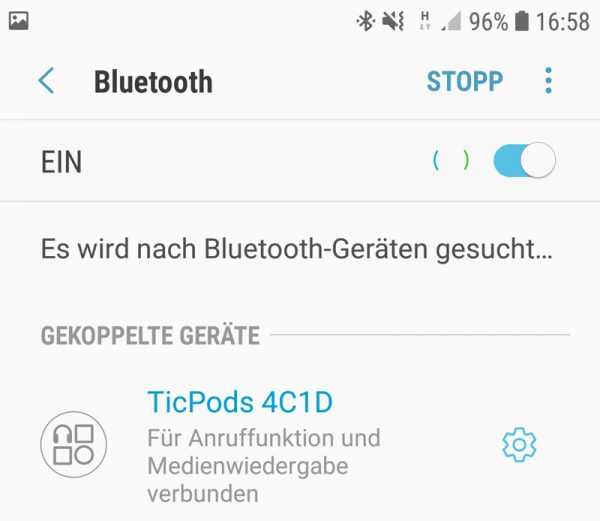
By clicking on the cogwheel icon in the Android 8.0 Bluetooth area you can select whether the TicPods should be used only for media playback or for the call function or for both (default setting).
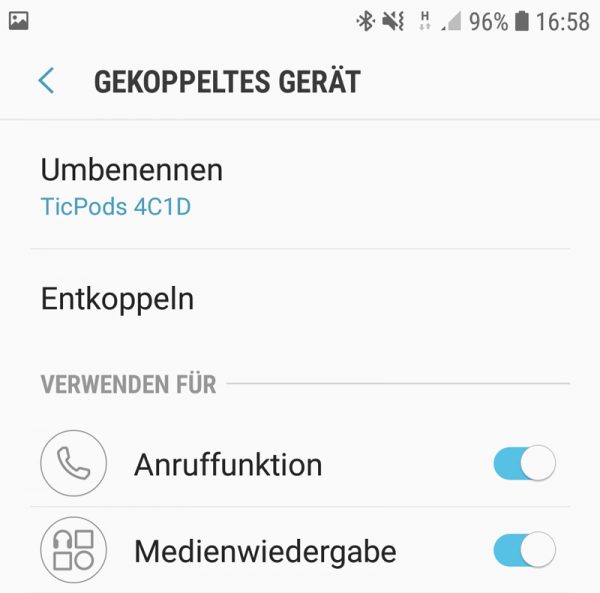
Mobvoi TicPods Sound Test …
Now it’s finally time, we can finally check the sound of the TicPods and test the in-ear sound quality! At first the Mobvoi TicPods sounded relatively flat. By slightly pressing the TicPods the basses got a bit better. Since the pre-assembled rubber tops are quite large, the TicPods didn’t get far enough into the ear canal. So we changed the rubber top and with the smaller rubber tops the Mobvoi TicPods sound was already much better.
However, we still didn’t find the sound optimal. Fortunately Android still offers a lot of possibilities for Bluetooth sound optimization. For example, we find the tube amplifier Pro very pleasant for music playback and if that’s not enough for you, you can adjust the sound profile in Android manually or even with your own Adapt Sound profile. The audio settings including the equalizer can be found in Android 8.0 under Settings -> Sound and Vibration -> Sound Quality and Effects. But of course there is no such sound variation with a TV, so that the TV as a whole remains a bit flat.
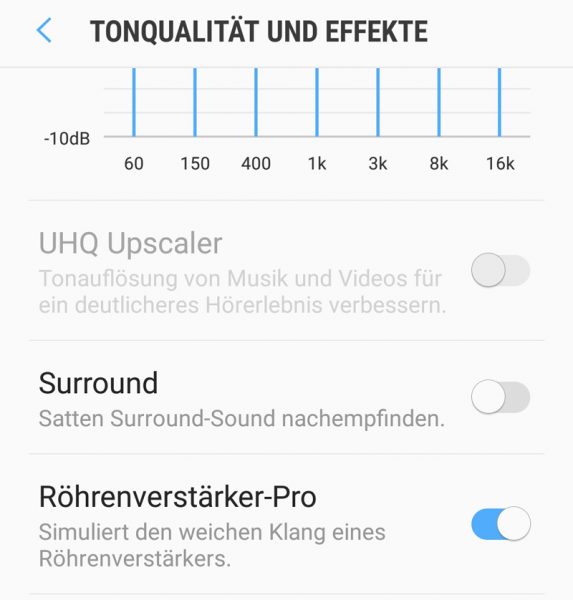
Of course we also tested the TicPods with the PC. We use a ASRock Taichi Mainboard with integrated Bluetooth 4.2 module. For the second Bluetooth connection you first had to disconnect the smartphone, then put the TicPods into the box, close the box, open the box again so that the TicPods blink blue and are ready for BT pairing. By the way, you have the choice in Windows whether you want to connect as TicPods 4C1D Hands-Free or as TicPods 4C1D Stereo. TicPods 4C1D Hands-Free activates the hands-free profile with microphone, which makes the sound much worse when playing music. So for music enjoyment, make sure you select TicPods 4C1D Stereo 💡
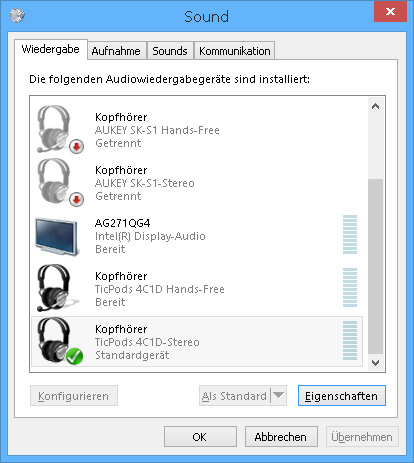
As soon as the TicPods are connected to the PC, the connection to the smartphone is denied and the “Connection to TicPods 4C1D cannot be established” error message is displayed.
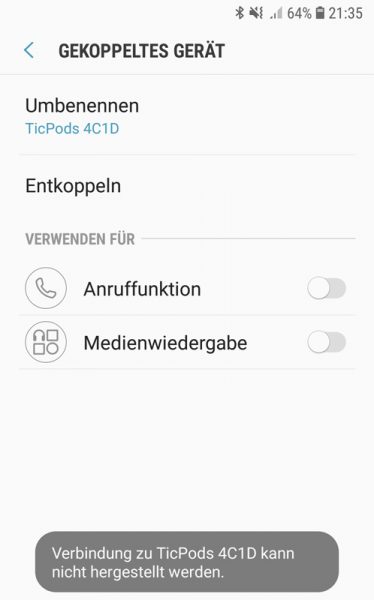
Fortunately, we also have some adjustment options for the PC connection, so the TicPods Bass only really comes into its own when the bass boost is activated. There’s also the Volume Equalization option, which significantly increases the relatively low TicPods volume.
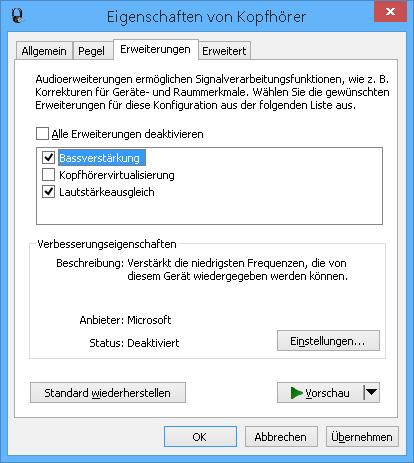
Mobvoi TicPods Microphone …
As mentioned before, the TicPods have an integrated microphone for hands-free operation. To convince you of the recording quality, we have created a short sound example.
Mobvoi TicPods Operation …
As mentioned before, the Mobvoi TicPods Free have a very special touch control. The volume can be adjusted by swipeing on one of the two in-ears, long pressing on the right in-ear for the Siri or Google language assistant as well as double tapping for the next or previous title. In practice, the operation is extremely fast because the gestures are very intuitive. However, in practical testing it has also happened more often that one has triggered the touch function if one only wanted to correct the in-ear seat a little bit. Nevertheless, we like the intuitive touch control very much.
Here you can see again the complete operation of the TicPods.
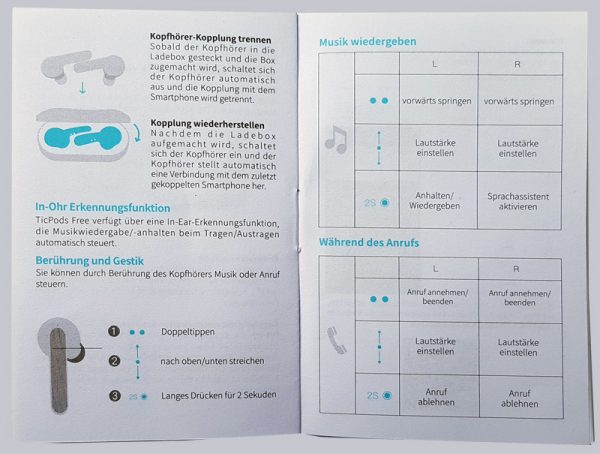
By the way, the TicPods switch off automatically as soon as you take them out of your ear and activate themselves as soon as you use them. All in all a really clever solution!
Mobvoi TicPods wearing comfort …
As with all in-ear headphones, it is extremely important to choose the right size of rubber tips to ensure that the headphones fit snugly in the ear and the sound quality is right. As we mentioned earlier in the soundcheck, if the TicPods don’t fit properly in the ear, the bass will also be missing. In addition, it becomes unpleasant in the long run and they don’t hold well enough on the ear if too large rubber tips are chosen. Mobvoi would have liked to have been able to deliver more different rubber attachments in order to really do justice to every ear. With the correctly selected rubber attachment even jogging was possible (by the way they are IPX5 certified, i.e. waterproof). All in all, you hardly notice the TicPods with the right attachments, especially as they weigh only 14 grams together.
We didn’t just test the TicPods in the city, in the living room and in the office, but also wanted to test them in other scenarios.
Mobvoi TicPods on the motorcycle …
Since we also have some motorcyclists among our readers, we first wanted to try out the TicPods on the motorcycle. Thanks to the relatively flat design, the Mobvoi TicPods even fit under the helmet, although of course touch operation is no longer possible. When putting on the helmet the TicPods do not slip out of the ears. However, the TicPods are pulled upwards when the helmet is removed, thus slipping out of the ears and in the worst case falling to the ground. In the TicPods helmet test we used a Nolan helmet – depending on manufacturer and model the place at the ear can vary naturally also something. The Noise Isolation and Noise Cancellation reduce the background noise and allow (at least in our opinion) enough important ambient noise and warning signals to pass under the helmet. Before wearing the helmet, you should make sure that it is allowed in traffic – we do not assume any liability!
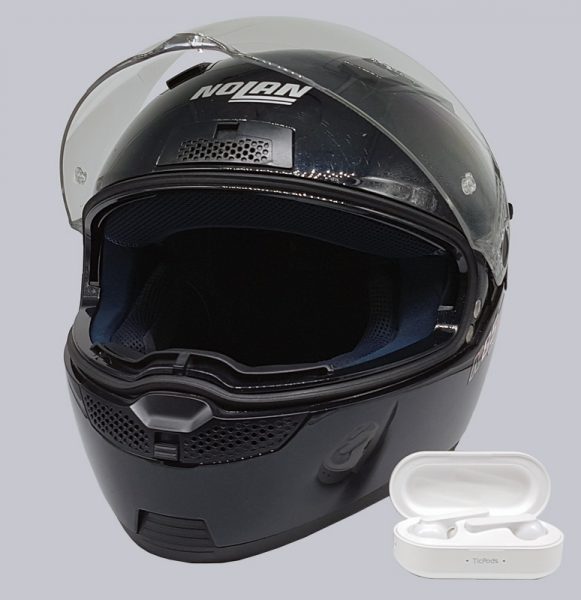
Mobvoi TicPods in the car …
While driving the TicPods could be carried well, but the ambient noise is strongly filtered by the noise isolation and especially by the active noise cancellation, so that the use in road traffic is in our opinion at least borderline! Since you still have to hear warning signals, sirens, etc. in time when driving, you should wear only one in-ear. During our test in a rental car on the beautiful volcanic island Lanzarote we could at least acquit ourselves without any problems.

Mobvoi TicPods on the plane …
In the plane we felt very comfortable with the Mobvoi TicPods. Because here the active noise cancellation came to the fore, with which the 85dB volume in the airplane was clearly reduced. Only the announcements in the airplane could not be understood with TicPods 🙄 The handling of the TicPods also worked very well. But there were difficulties with the first connection, because apparently so many Bluetooth devices in the airplane have been using our TicPods at the same time and wanted to connect, that first with the error message “Connection to TicPods 4C1D can not be established” the Bluetooth connectivity was refused. We had to open the charger box and then immediately connect to the TicPods, then it worked after a few attempts.

All in all, the TicPods are a solid companion. However, one should think of noise isolation and especially active noise cancellation, which may unintentionally filter out important information, such as announcements at the station or in the train or plane, but also warning signals in road traffic (§ 23 Paragraph 1 Sentence 1 German Road Traffic Regulations).
Mobvoi TicPods Temperature …
What we noticed while wearing it, however, was a slight development of heat, especially on the right side. Since there have been many discussions whether the use of Bluetooth in-ear headphones can be harmful, we could not measure the SAR value (Specific Absorption Rate), but at least wanted to measure the temperature development. After a long time with maximum volume, a maximum in-ear temperature of 25.7°C was measured at about 21°C room temperature.
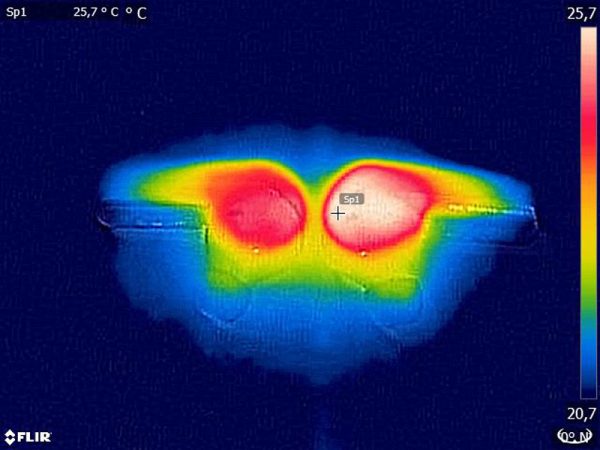
Mobvoi TicPods Free Result and general impression …

